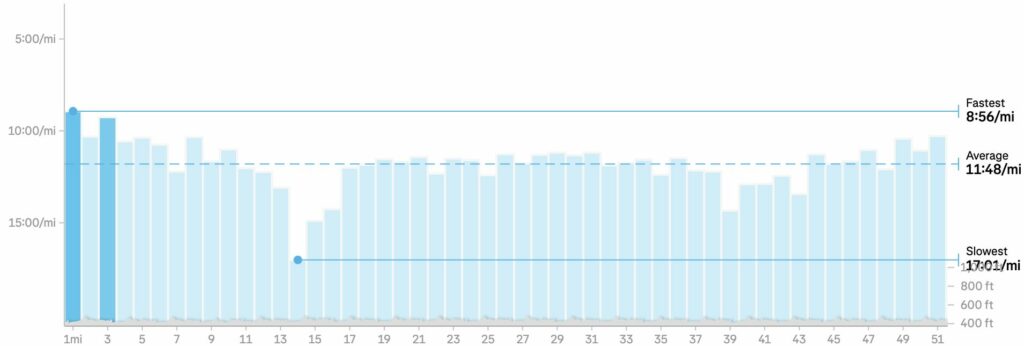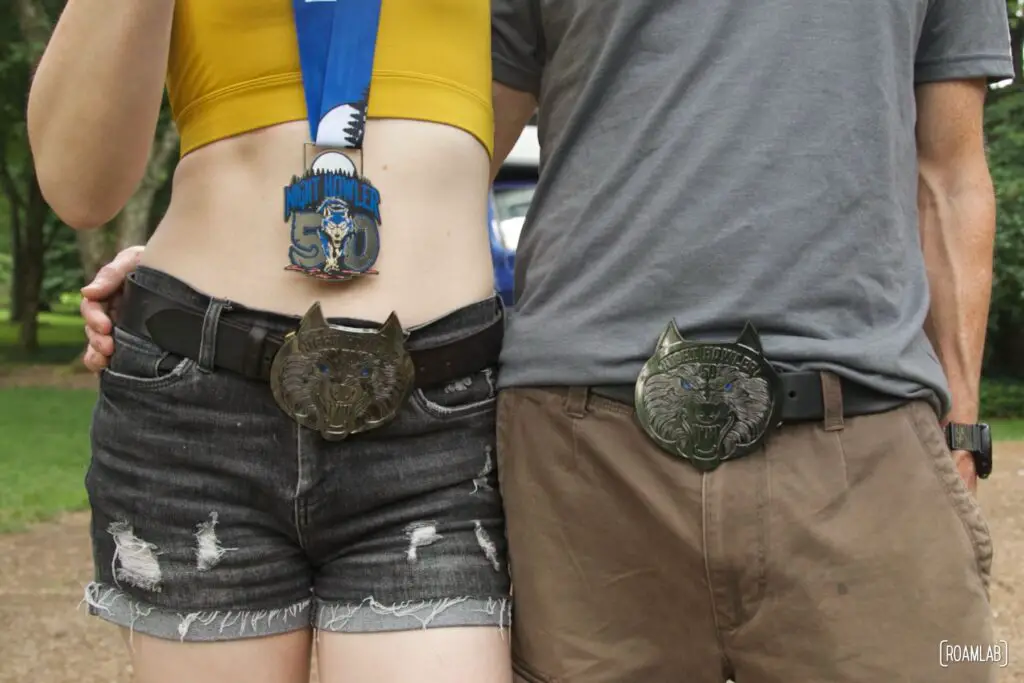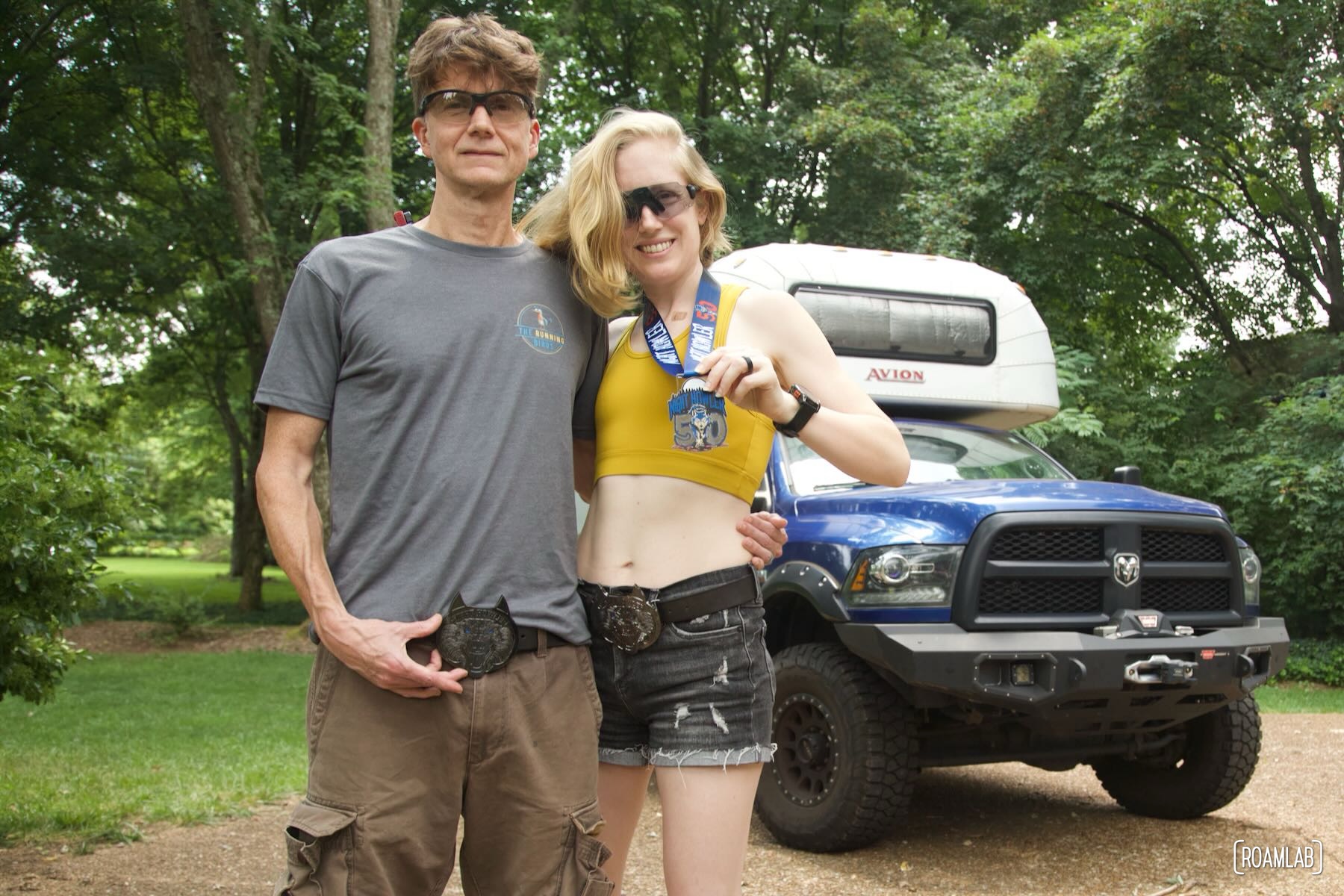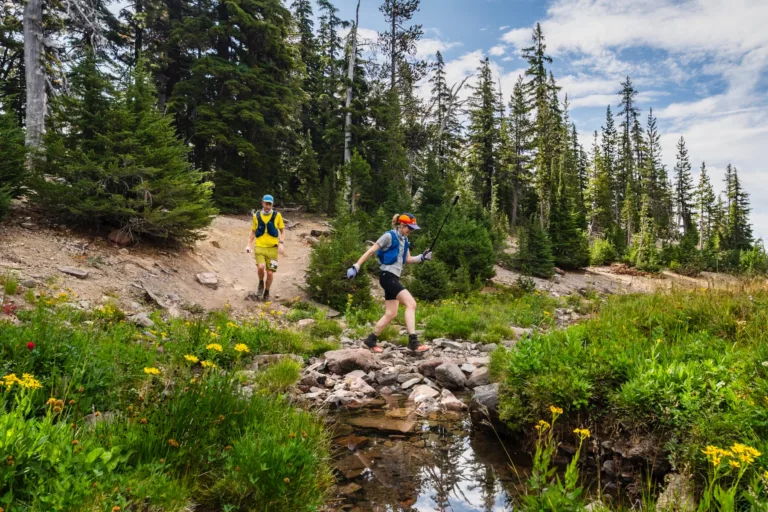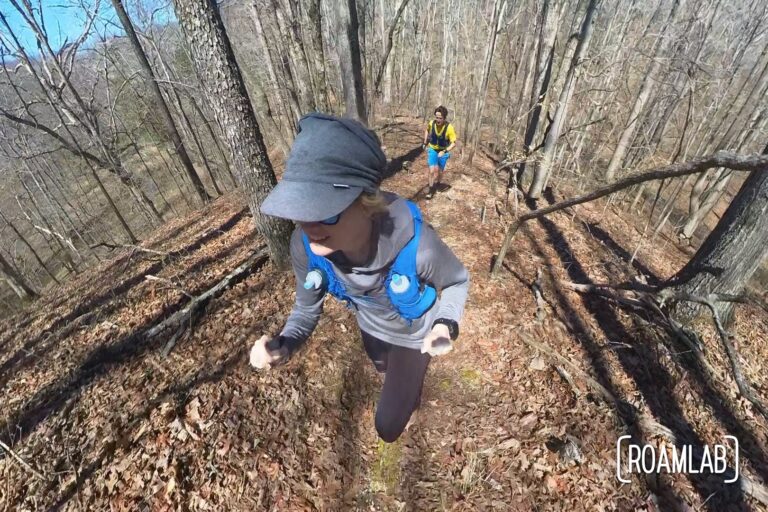Night Howler 50 was supposed to be a test. Chris and I will be running our first 100 mile race this fall and while we have run mountains, long distances, and lots of trails, one of the major challenges of a 100 miler (if you aren’t a professional that can finish a race in 14 hours) is running through the night. Night Howler 50, is a trail race where that is pretty much all we do.
We sign up for the inaugural Night Howler 50 as part of our training block. The course is a 2.5 mile loop course in Hoover, Alabama, at the end of June. While the professionals are running Western States, we line up in a sports complex, surrounded by baseball diamonds and risers. At 8pm, the sun begins to set and we begin our first lap of 20.
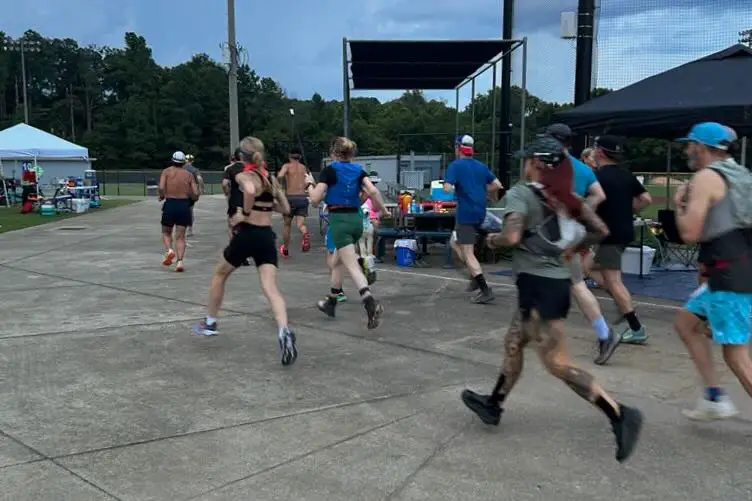
The Course
I’ve never run a loop course before because…it’s a loop course. The monotony of running laps is just distressing. But, as a test, a loop course is ideal. We don’t have a crew to follow us down the course with a hatchback full of fuel options and first aid interventions. But, with a loop course, we are able to set up a station with our own gear to test out for the race. And we make use of it.
Instead of weighing ourselves down with everything we might need, we are able to run with minimal gear on each individual lap, while swapping our fueling options and kit as need be. We have a fueling plan laid our with Tailwind and homemade gels already portioned into their respective flasks and ready to be grabbed with each lap.
The first few laps of the course are a bit of a blur. I want to get some visual sense of the route while there is still some light out. I collect impressions of the bridge into the forest and four flight descent to the forest trails. I note the undulating course slowed by rocks and roots. The four story climb back up the stairs, across the bridge, and half mile winding around baseball diamonds to round out 2.5 miles and the aid station at the start/finish.

An Extra Stumbling Block
That last half mile is mostly pavement. After 20 laps, that will mean 10 miles run on pavement. A new concern springs to mind: my foot. My foot is still sensitive after a stress injury from Strolling Jim, two months ago.
Night Howler marks the first race I’ve every started with the very real awareness that I might not finish it. If my foot is overly stressed, I will drop. So I’ve been regulating my pace and form to minimize straining my foot. Up to this point, I’ve found that I can run on trails without any pain, but pavement has been a dangerous stressor.
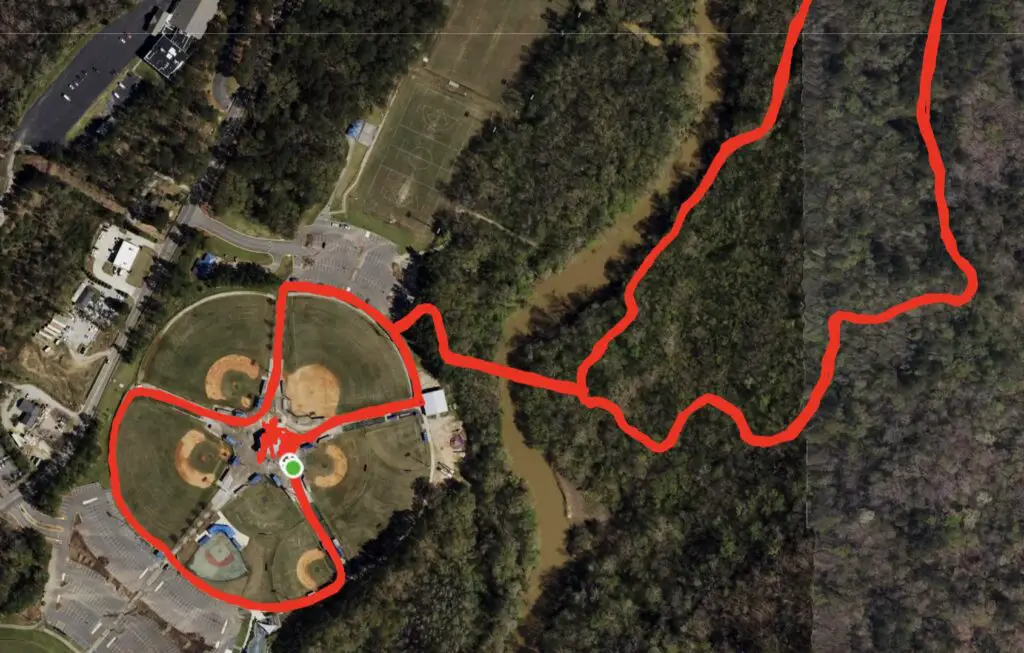
Running in the Dark
By the end of the first loop, it is an already dark and we turn on our lights. We have run with headlamps on occasional night runs and at the beginning and end of Silverheels last year. But this race, I also shell out for the UltrAspire 800 Waist Belt. With both the lead and waist lights, I have a broader spectrum of illumination and can run with each at a lower setting.
Of courses one of the many perks of running with a partner is that our lighting is complementary. Any time the route is wide enough for us to run side-by-side, we have fantastic visibility.
Everything at Once
While we are delighted with our lighting success, something else is wrong. Neither of us can quite put our finger on it, but we are slowing down with each lap. We walk the 6th lap and start discussing what circumstances would lead us to drop from the race.
My foot has been a constant concern, but now my stomach is also complaining. It seems early in the race to be experiencing gut issues. But even walking, I don’t feel enough relief to feel optimistic about finishing the race. Yes, the generous cut-off time for this race means we could walk the rest of the race and still finish it, but I have no interested in trudging through the Alabama heat of late morning.
I want to be done by sunrise.
The upside of our walk, though, is we have the opportunity to clear our minds and focus on interventions: rather than just trying to tough it out, when we get back to the aid station, what will we do to improve our odds of finishing? Chris suggests going to the bathroom, I decide to also change my shorts.
I have run so many races in these shorts, but I’m feeling bloated, and the high waistband of these bike style shorts is adding extra pressure to my abdomen. Fortunately, I packed an entire change of clothes for the race, so I grab the shorts and manage to change without taking off my very muddy shoes.
Oh, did I forget the mention the mud? This is the early summer in the south and thunderstorms are a weekly occurrence. Earlier in the week, we had storms anticipated on race day. And while we were fortunate not to be dodging lighting strikes, the rain of thunderstorms past still lingeres in mud pits. Mud pits that only expand as each lap of runners churns the earth and water.
A Second Wind
Between the walk lap, restroom visit, and changed shorts, we started feeling better and our laps begin to speed up as our bodies balance out and the temperatures continued to drop with the progress of night.
Lesson 1: When the going gets tough, change something. We didn’t know exactly what was wrong, but trying to tough it out was just resulting is slower laps. Slowing down to work through our problem allowed ourselves to experiment and find an intervention that helped.
As far as we can tell, there were a lot of stressors contributing this this slow down: surprising heat, humidity, a tight waistline, and a gut still full of pizza.
The next few laps didn’t quite fly by, but I keep myself occupied by monitoring our paces as we try to recover time that we lost during our slump. Because, here’s the problem: the Night Howler team tracks the laps by checking off boxes on a large grid at the finish line. While we lost a lot of time with our walked lap, I can see on the boxes that I am still in contention for the podium and now I can’t help myself.
That, and I discovered that the aid station has cups of ice and soda. The soda is good and all, but it’s the ice that makes the difference. Yes, we are running through the night, but it’s a summer night in Alabama. The lowest temperature is 76 degrees farenheight and the only way it could been more humid is if it is raining.
The women at the aid station becomes my best friends this night.
By the time we hit mile twenty five I am optimistic. We are past talking about dropping. But this is definitely the rationalizing section of the race. “One more lap and we are three-fifths through the race” kind of mind games. I’m breaking down the course into bite-sized chunks to celebrate those little victories.
Never Enough Water
Another discovery we make is a common one for anyone recreating in the heat: we knew we needed to hydrate, but it is so much more than we anticipated. For a 2.5 mile loop, we thought half a bottle of calorie drink would be sufficient. Quickly we discovered that we can drink a whole flask in a lap.
Even so, half-way through, Chris observes that what is coming out the other end is far from its common color. A bit of discoloration is common during long races. Some degree of dehydration is inevitable as is the more concentrated urine that results. But this is far darker than we normally anticipate.
During the run, we respond with more salts and drinks, but researching after the race, we discover that the orangy-brown liquid leaving our bodies is not only related to dehydration, but the pigmentation likely indicates accelerated muscle breakdown which is an easy result of hot, humid ultras. Fortunately, the answer to this is pretty simple: more water.
Lesson 2: When your urine starts resembling sweat tea, it’s time to add more water. Additional sodium isn’t inherently dangerous in this case, but it can cause further concentration. So, next time we encounter this symptom, we stick with our current fueling schedule but add more water along with the liquid hydration that was part of the plan.
Other Fueling Concerns
Granted, while salt doesn’t help with the muscle breakdown, it is critical in other things. Other things that are beginning to also manifest in the back half of our race. After several races were Chris suffered near race ending leg cramps (Blue Ridge, Lookout Mountain, and Strolling Jim) we are particularly aware of the importance of reacting to any leg tightness before they fully cramp.
Along with a bottle of Base Electrolyte Salt, we also have several bottles of Hot Shot. I have to admit, I was skeptical about the idea of Hot Shot, but after listening to an interview with Jeffrey Sankoff (AKA the TriDoc) about the two frameworks for cramping research and use of capsaicin to interrupt the signals that lock muscles, pickle juice and other spicy products make more sense.
Once I notice my muscles start tightening, I take a swig of Hot Shots at the beginning of each lap. This did appear to delay muscle cramping, though, of course, I don’t know how long I could have held it off if I had a longer distance under these same conditions. That said, I only had one bottle before we ran out and I would have used more if it was an option.
Lesson 3: Pack extra, whatever that might be. Hot Shot helped refresh my muscles each lap, while I had it. It would have been easy to pack a few more for the race. This goes for pretty much anything that has been useful in the past.
This is also about the time that Chris runs out of the Tylenol that he packed. The aid station has Ibuprofen but no acetaminophen. I had neither the time nor the breath to read them the riot act but seriously, it would be safer for the athletes if the aid station had no pain killers than to be giving endurance athletes NSAIDs mid race.
Fortunately, I have extra Tylenol in my pill pack. I am not using pain killers for this race because of my foot injury. It is more important for me to be aware of my foot and responsive to its pain level than alleviate other pain points. Not only am I able to modify my pace to minimize harming my foot, but I am able to give Chris my painkillers.
Lesson 4: Pacing Partners are the best. Night Howler is the first race where I line up at the start line with the full acceptance that I might DNF it (Did Not Finish). We have Oregon Cascades 100 in the fall and it is far more important to me that my foot is in a condition that I can run that race than that I finish this 50 miler.
So I tell Chris that I expect him to run his own race and I’d travel at whatever pace that my foot allows. Fortunately, that is a lot faster than I anticipate and the heat and humidity have Chris a lot slower. We meet in the middle at a moderate pace where each of us motivates and supports each other through the rough patches.
And, yes, I guess you could say that I muled a couple Tylenol pills for Chris.
The Race So Far
We get to be pretty recognizable to the race officials and volunteers. The race director calls us out as the “Dynamic Duo” each time we compete a lap. The Aid Station attendants greeted us by name. Everyone is particularly friendly and offers an emotional bump each time we complete a lap.
The sky begins to lighted around lap 16 and I start doing the math in my head. My goal has been to finish the race in 10 hours, running an average of 12-minutes splits. While I did manage that average, I didn’t anticipate how much time we would spend in the aid area, responding to difference challenges in the humidity and the dark. We won’t make my sunrise goal, but the faster we finish, the less time we will run in the sun, and the more heat we can avoid.
Even so, sunrise could not come fast enough. Just as the pre-dawn begins to lighten the forest trails, my belt lamp begins flashing. Despite the reported 11-hour life span when set on “low” the battery charge is almost out even on one of the shortest nights of the year. At the end of the lap, I drop the belt off at our aid spot and keep running with just my headlamp.
Lesson 5: extra batteries! I thought my belt lamp would have enough charge through the night but it fails before sunrise. These product specific batteries are obnoxiously expensive, but what’s the point of a lamp with no light?
I have heard a lot about the sunrise effect. Many ultra runners have parroted a rule “never drop in the dark.” It’s the mantra inspired by the effects of night on running. So many runners have reported new motivation and strength with the sunrise. Between that and the prospect of single digit miles left ahead, we picked up the pace.
That, and the leader board. It looks like I’m in second, and I won’t have any surprises in these last few laps. Chris, even while he’s ready to get this race over with, questions my pacing. But I’m ready to finish this and count down to the last time I climb down this flight of stairs, the last time I balance on an improvised bridge of tree limbs, the last time we climb up the hill, the last time we wade through marsh…and that final sprint as we enter the sports complex, wind around baseball diamonds, and then negotiate at what point we will hold hands and walk to the finish line.
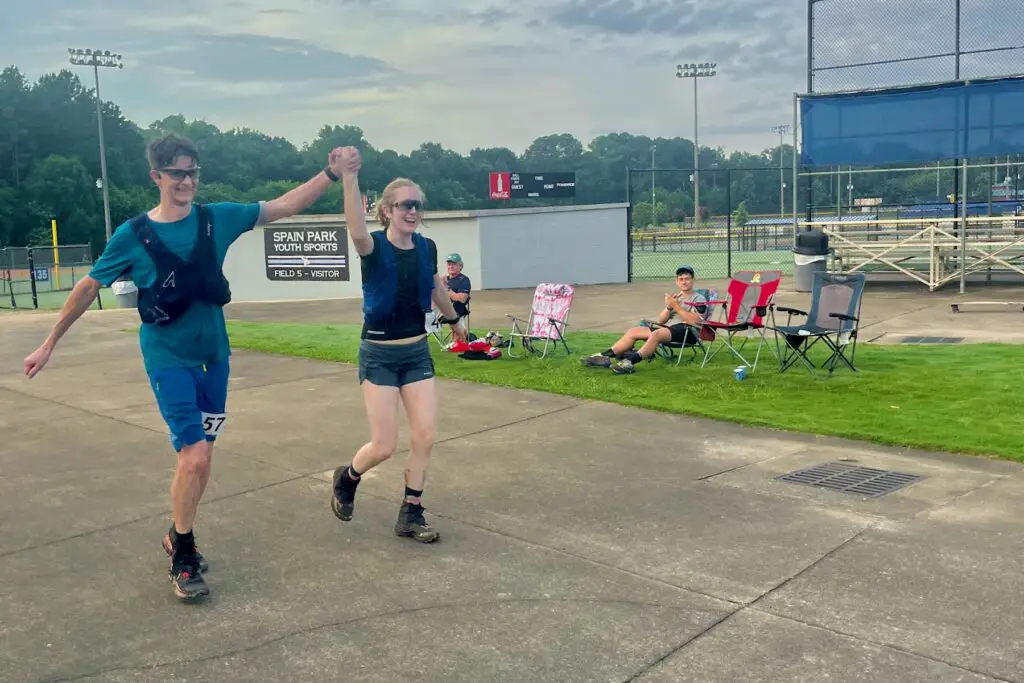
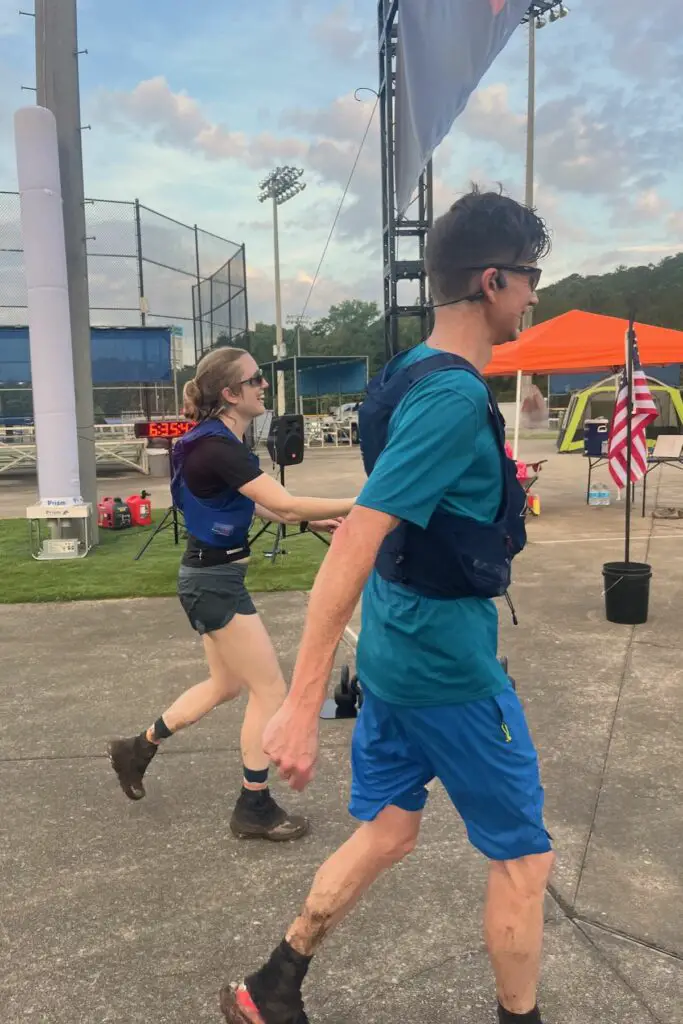
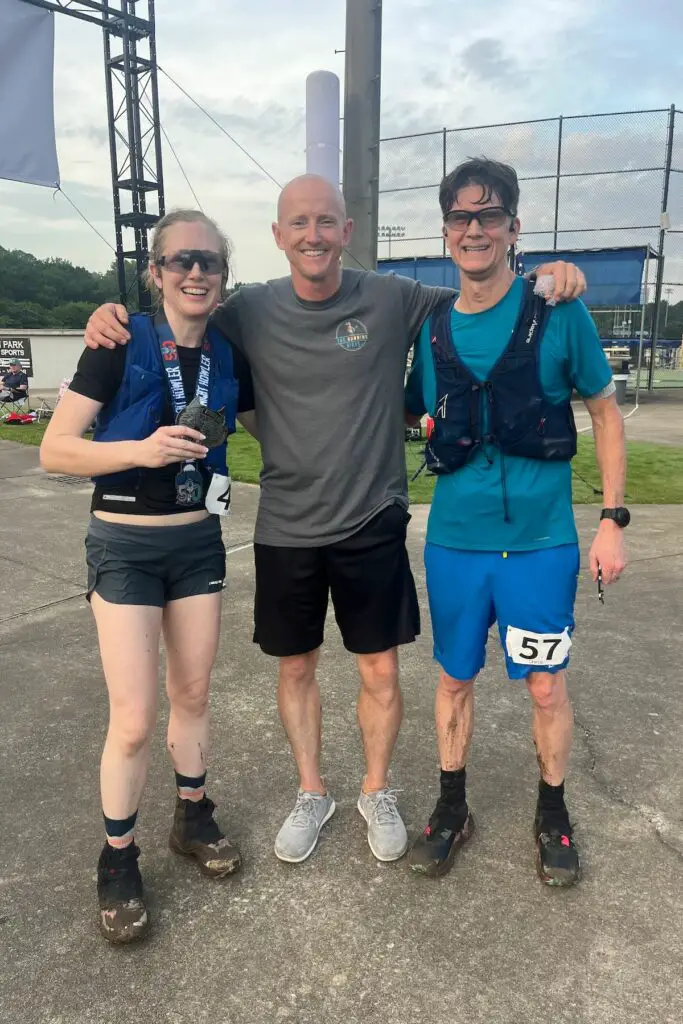
After the Race
Of course, with that final push, there isnt’ anything left in the tank. We brought a wonderful reclining folding chair that I just sat in for ten minutes after completing the race. Then I felt guilty and gave Chris a turn in the seat.
Lesson 6: Have reclining seats for all the runners at the race finish
There’s one last problem that I didn’t completely anticipate. As an overnight race, we not only push our bodies to their limits but miss a night of sleep in the process. Normally, after a race, we spend some time socializing at the finish line and then catch up on some sleep in our truck camper. But this is the summer in Alabama. And when the nights are hot and sticky enough to almost derail our race by dehydration, a day in our camper would be unbearable.
Which means we had to drive several hours on no sleep.
Lesson 7: Book a hotel. Most races we have run are either during the day or in climates where we can recover in our camper. But for an overnight race in the heat, a hotel stay for recovery should be accounted for in the overall race budget.
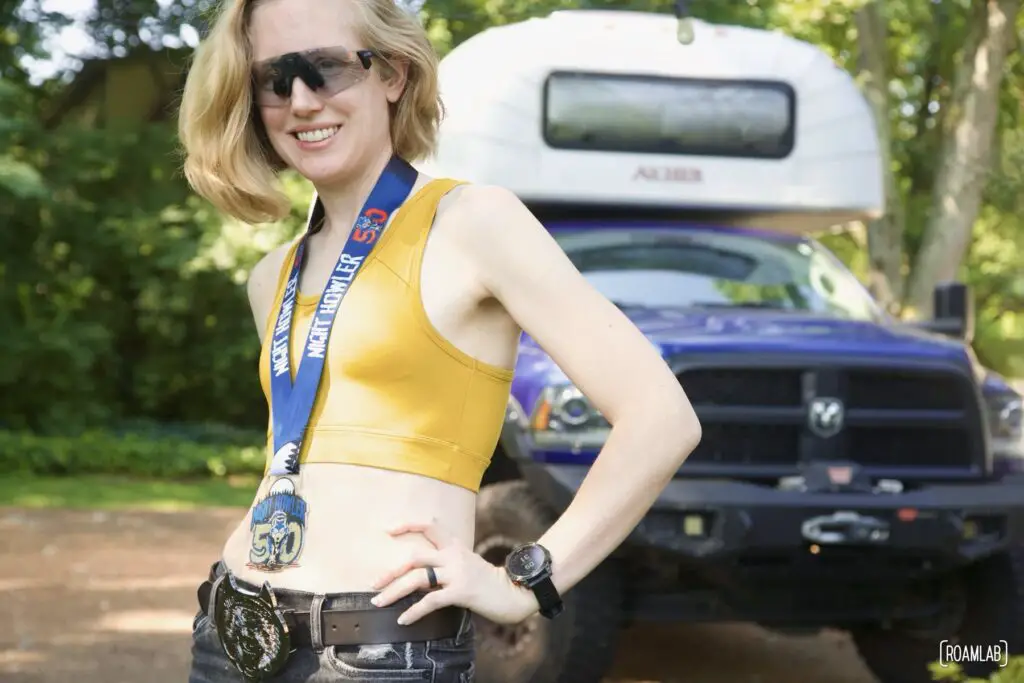
Performance Review
For a race that was intended as a dress rehearsal, I’m rather proud of our performance. Our low point is pretty easy to spot at miles 14, 15, and 16. But, overall, we maintain a pretty solid average.
I would comment on our time at the aid station as failing point, but this was meant as a test, and we learned a lot between fueling, problem solving, and general experimentation.
We have a lot of lessons learned, the least of which is to never sign up for a race in mid summer in the deep south, even if it is at night. And, hey, we still came away from some flashy swag.
